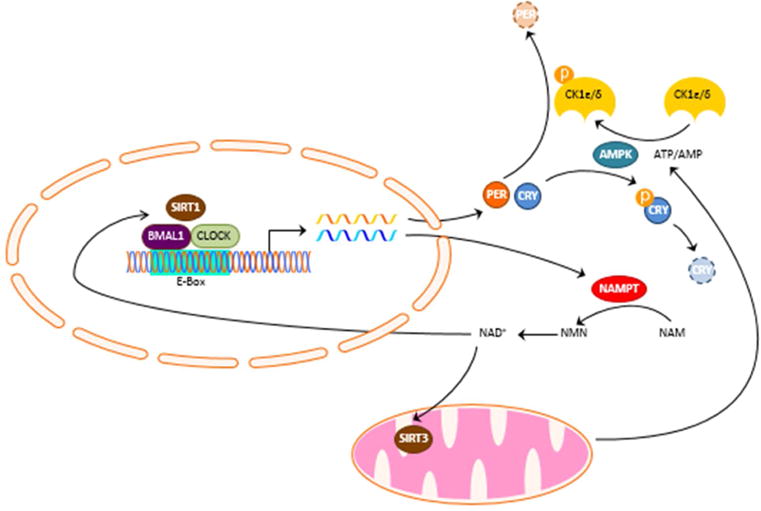Figure 2.

Interplay between the circadian clock and cellular energy state. The circadian clock imposes rhythms of nicotinamide phosphoribosyltransferase (NAMPT) that catalyzes the synthesis of NAD+ from the conversion of nicotinamide (NAM) to nicotinamide mononucleotide (NMN). The rhythmic synthesis of NAD+ drives rhythms in the activity of the NAD+-dependent deacetylases sirtuins (SIRTs). SIRT3 generates rhythms of mitochondrial oxidative phosphorylation by rhythmic acetylation of mitochondrial proteins. Rhythmic ATP production imposes a rhythm in the phosphorylation of casein kinase 1 ε/δ (CK1ε/δ) and Cryptochrome (CRY) by adenosine monophosphate-activated protein kinase (AMPK). SIRT1 binds BMAL1:CLOCK in a rhythmic manner and promotes the deacetylation of clock proteins.
